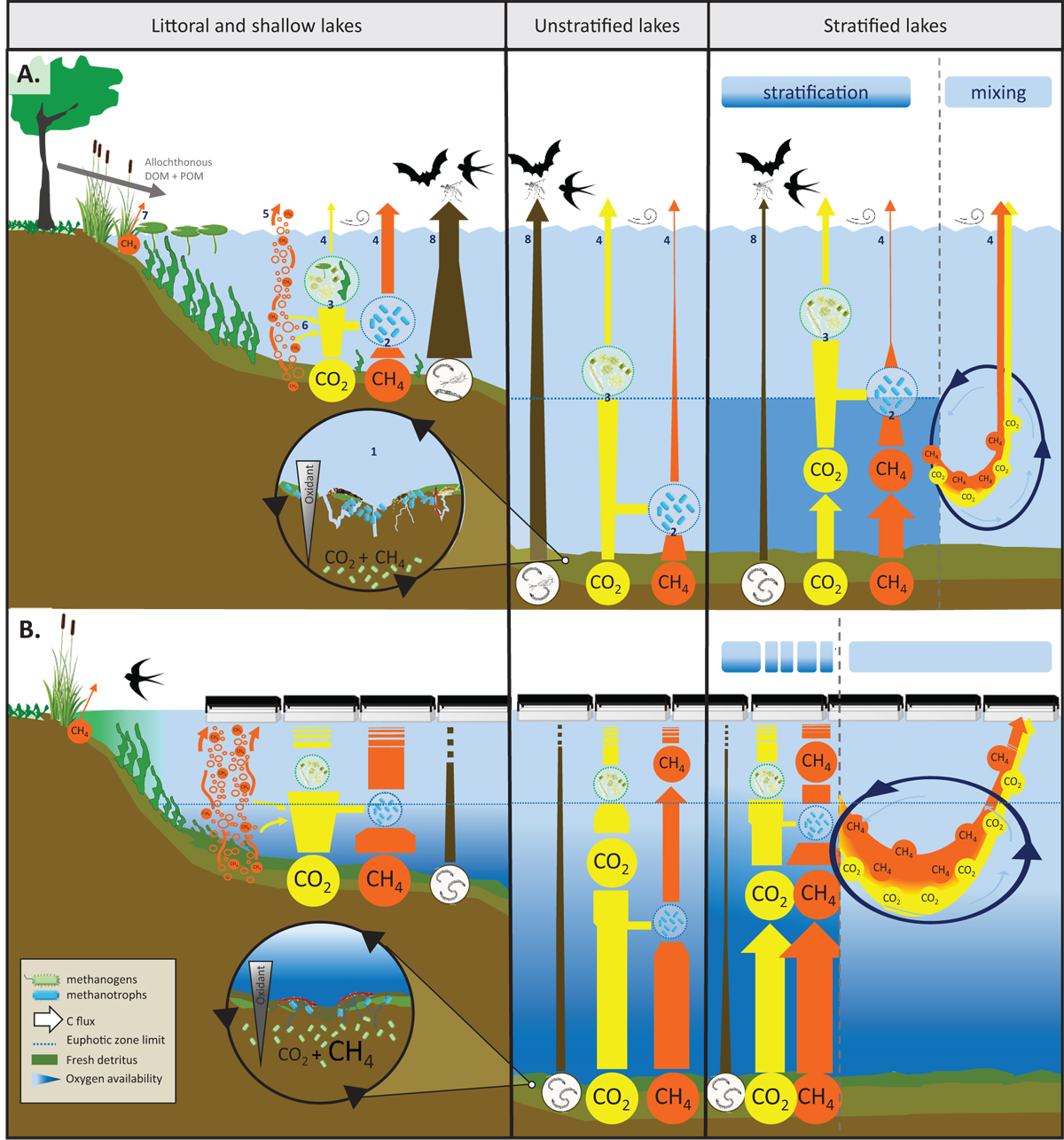Fig. 1

Download original image
Schematic overview of the GHG dynamic and C fluxes from aquatic ecosystems according to lake type (A) and potential short-term impact of FPV (B). A. Once in the sediment, the processing of organic matter produced CO2 and CH4 (1). Once produced, the oxidation of CH4 to CO2 by methanotrophs and the uptake of CO2 by primary producers mitigate GHG emissions to the atmosphere (2,3). GHGs that escape oxidation and the carbon sink are emitted to the atmosphere by diffusing across the water-atmosphere interface (4). At shallow depth, CH4 is transported from the sediment to the atmosphere through ebullition (5). During the ebullition process, there may be dissolution and oxidation of CH4 into the water column (6). Vascular plants such as macrophytes act as important conduits for CH4 to the atmosphere (7). Emergent aquatic insects, which spend their larval stages in lake sediments and emerge as adults, represent C fluxes from aquatic to terrestrial habitats, providing high quality resources for terrestrial consumers (8). B. Irrespective of lake type, the increased OM supply resulting from the death of primary producers in response to severe shading and from allochthonous inputs could fuel benthic respiration processes and thus GHG production. In particular, CH4 production would increase, favoured by anoxic conditions in the sediments. At shallow depths, much of the CH4 produced would be emitted to the atmosphere via ebullitive pathways. The GHG not emitted by ebullition would accumulate in the water column due to reduced CH4 oxidation and CO2 uptake by primary producers combined with reduced gas transfer velocities beneath the panels. For stratified lakes, high emissions could occur during mixing events, although though FPV would shorten stratification and reduce mixing depths. FPV would reduce insect larval biomass and ultimately adult emergence due to reduced DO, cooler temperature and loss of habitat complexity and trophic resources. Such effects on C fluxes would increase in magnitude with panel coverage, especially in shallow and small lakes, due to higher primary and secondary production prior to FPV implementation.
Current usage metrics show cumulative count of Article Views (full-text article views including HTML views, PDF and ePub downloads, according to the available data) and Abstracts Views on Vision4Press platform.
Data correspond to usage on the plateform after 2015. The current usage metrics is available 48-96 hours after online publication and is updated daily on week days.
Initial download of the metrics may take a while.


